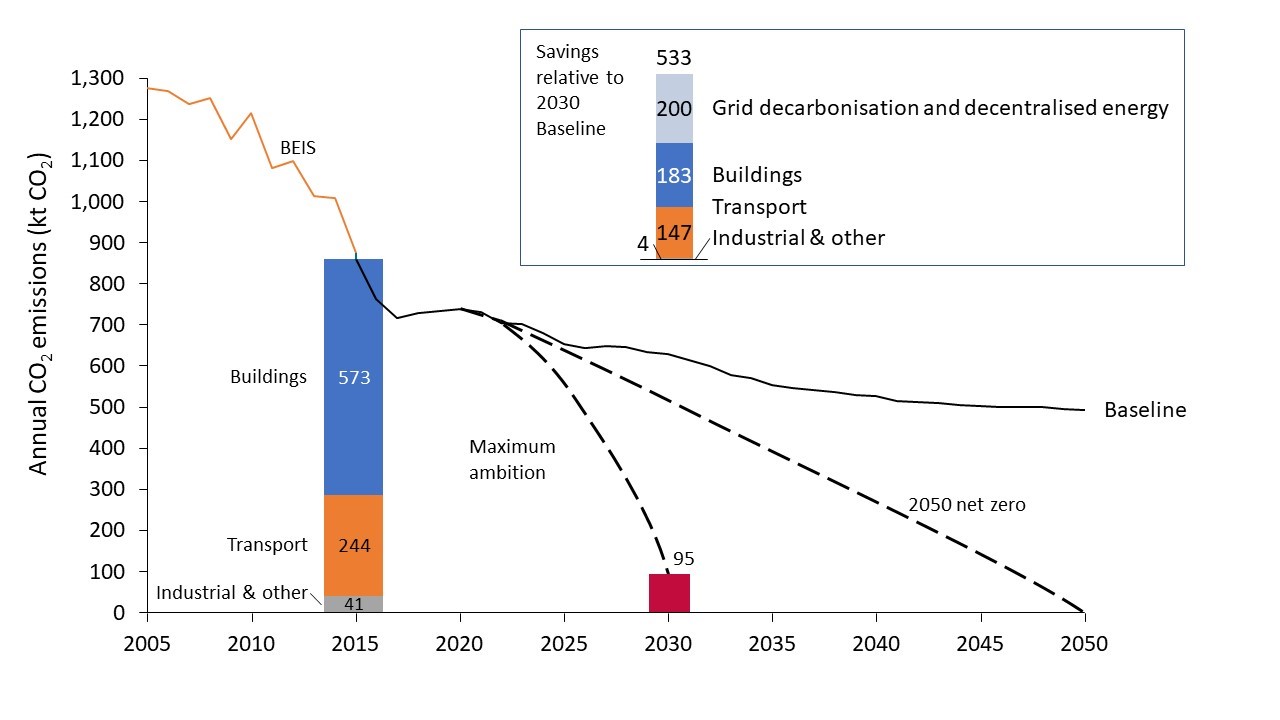What is the Council doing about the climate emergency?

In June 2019, the Council declared a Climate Emergency. It agreed to set an ambitious target to reach net zero carbon emissions 20 years ahead of the national target in 2030. Our carbon neutral plan is our strategic plan for responding to the Climate Emergency and reaching our ambitious goal.
Developing our carbon neutral plan
Our draft Carbon Neutral Plan was published in late 2020.
Read the full draft carbon neutral plan.
This draft was subject to public consultation (now closed) and an equalities impact assessment in the first half of 2021. Our updated carbon neutral plan responds to these exercises and takes account of subsequent progress. On 20 October 2021, it was recommended by Cabinet for adoption by Full Council. Publication will follow formal adoption.
The updated carbon neutral plan presents our existing carbon footprint and our goals. It reports on some key achievements to date, and presents an initial action plan to help set the direction towards our 2030 target. It outlines how we will monitor and report progress. We can expect the climate change agenda to evolve rapidly, and anticipate incorporation of new actions in response to new opportunities.
Key achievements so far
- building zero carbon homes
- creating safer routes for walking and cycling
- creating controlled parking zones to discourage car use
- installing electric vehicle charging points
- planting thousands of extra trees
- procuring 100% green electricity for council buildings
- developing a feasibility study for establishment of low carbon district heat networks in the borough
- preparing a business case to find solutions for private sector housing such as installing ground source heat pump ambient loops
- setting up and strengthening partnerships with businesses and local organisations to help reduce emissions across the borough.
Partnership-working will be key to success
The scale of the climate change challenge, and the need for widespread engagement if we are to address it, mean that effective communication and partnership-working will be critical components of future success.
If you work for a local business, you might benefit from support with decarbonisation through the Greenwich Greener Business Programme, which we are supporting in partnership with SELCE.
Please sign up to our newsletter to help you stay up to date with what we're doing, and of opportunities for local residents.
Evidence base
The evidence, which informed our draft Carbon Neutral Plan and subsequent update, base report considers what actions we can take which are consistent with science-based targets for Greenwich, in line with research by the Tyndall Centre for Climate Change Research. Maintaining the overall ambition in line with the report will mean that Greenwich is able to meet the target of limiting global temperature rise to 1.5oC.
In 2015 the total annual emissions for Greenwich were 860kt CO2. The graph shows that if we made the minimum number of changes recommended in the report, the "baseline scenario", the emissions would be reduced to 628kt CO2 by 2030, a reduction of 27%. These savings would mostly be made from energy efficiency improvements in buildings, a reduction in the use of carbon fuels in the national grid and increased use of some low emissions vehicles on our roads.
If we made all the changes recommended in the report, the "maximum ambition scenario", emissions in Greenwich would be reduced by 77%. This level of emissions saving would require an almost complete decarbonisation of heating in buildings. On our roads, it would mean that the total distance in kilometers driven in cars are reduced by 45% relative to 2015, and battery electric vehicles would need to make up 51% of the car fleet.
If full decarbonisation of the grid is achieved, the emissions in Greenwich would reach 95kt CO2 by 2030 or an 89% reduction from the baseline.

